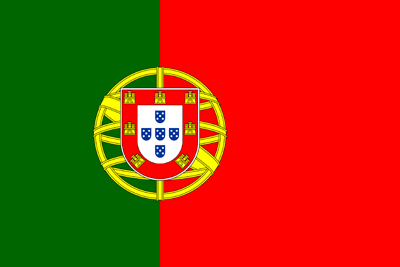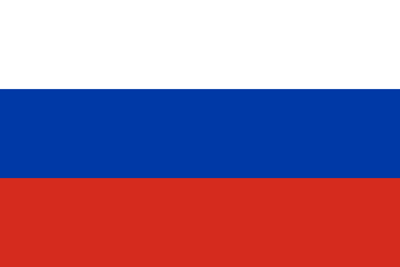A Conversation about Proper Nutrition
(An extracurricular activity for students in grades 7–9)
Goal: To study and systematize knowledge about rational nutrition, consider this information from various perspectives, and analyze it from a scientific standpoint; to stimulate students' cognitive activity; to foster communication skills and the ability to argue and defend one's point of view.
Equipment: Slide presentation "A Conversation about Proper Nutrition", multimedia setup.
Scenario
Technology Teacher:
I have before me the questionnaires I asked you to fill out. They contain two questions:
"Chip-eater":
I believe that the best food is chips with soda, and a pizza with a hamburger wouldn't hurt, all of which should be washed down with a Snickers.
Dietitian:
The food offered by our first guest is called "junk food." You may ask, why? The answer is simple. Let's look at the information presented on the packaging of some of these food products. (Slide demonstration).
In a chocolate bar, in addition to dairy and cocoa products, there are: emulsifiers, flavoring agents (usually identical to the natural ones), and preservatives. In potato chips and croutons, in addition to potato and rye-wheat flour, there are flavoring additives, also identical to natural ones, and flavor enhancers. In carbonated drinks, in addition to water and sugar, there are: saccharin and cyclamate (sugar substitutes), orthophosphoric acid, colorants, synthetic essences, sodium benzoate, and carbon dioxide.
All of these substances are harmful to our body in one way or another. For example, in a number of countries, saccharin and cyclamate are completely banned because experts' opinions about their safety differ. As for sodium benzoate, it can cause intolerance in particularly sensitive people, leading to hives, asthma, or even anaphylactic shock. It is also a carcinogen, and prolonged exposure to it can cause cancer.
When food rich in carbohydrates (like chips) undergoes high-temperature processing, a large number of harmful chemical compounds are formed, which contribute to the development of cancer, can affect the nervous system, and lead to infertility.
Why is this food called "junk food"? Scientists have found that "fast food" clogs our body with unnecessary substances that cause many diseases. And as we know, waste is garbage. Furthermore, "fast food" is addictive, much like a drug, due to the imbalance of hormones responsible for the feeling of fullness.
Let’s look at alternatives to all of these products that are healthier. (Slide).
"Sweet-tooth":
Clearly, you can’t have chips for lunch. I'm upset that we don't have cakes, candies, or other sweets in the cafeteria. After all, sweets improve brain performance, which is really important for us. Is it that expensive?
Dietitian:
It’s not about the price at all. The variety of dishes for breakfast, lunch, and dinner is selected based on the nutritional value of the products, their content of essential nutrients, and their calorie content. Let's talk about the calorie content of food.
A person’s daily calorie needs depend on their age, gender, type of work, and where they live. Specialists have developed approximate daily calorie requirements for different groups. For boys aged 14-17, it's 3000 kcal, and for girls in this age group, it’s 2600 kcal per day.
Let’s imagine that, based on the preferences of a sweet-tooth, we have a honey-chocolate cake for breakfast, which contains 610 kcal, and we wash it down with fruit jelly, adding another 152 kcal.
The total calorie content of such a breakfast is 762 kcal.
For lunch:
Apricot soufflé – 414 kcal
Two cottage cheese buns – 882 kcal
Cherry juice – 199 kcal
Total: 1495 kcal
For an afternoon snack:
Sugar cookies (200 g) – 804 kcal
Yogurt (100 g) – 85 kcal
Total: 889 kcal
For dinner:
Apple pie (200 g) – 764 kcal
Apricot juice – 102 kcal
Total: 866 kcal
The total number of kilocalories consumed in a day would be 4012, which exceeds the norm for boys by 1012 kcal and for girls by 1412 kcal.
It’s easy to imagine what would happen with such a diet.
Let’s look at a reproduction of a painting by Kustodiev. You can see that the people in it aspired to be full-figured. At first glance, they seem healthy. But medicine has proven that an excessively full person gets sick more often, ages faster, and lives, on average, 7 years less than those with normal weight. Obesity is associated with disorders in the functioning of the endocrine glands and leads to diseases such as atherosclerosis, hypertension, diabetes, heart attacks, and strokes. This is the result of improper nutrition, a sedentary lifestyle, and insufficient physical activity.
Here are a few examples:
To burn the energy from a sandwich with cheese (150 kcal), you would need to do an hour of exercise.
A cutlet with potatoes (725 kcal) can be "cancelled" by walking 20 km.
An ice cream (290 kcal) can be "offset" by shoveling snow for 1 hour.
A slice of cake (290 kcal) can be "burned" by cleaning the apartment for 1.5 hours.
Meat-lover:
Physiologist:
But are you aware of the future of people who thoughtlessly focus on building muscle? As soon as they reduce the load, their muscle tissue turns into connective and fatty tissue, leading to obesity. Furthermore, eating only animal proteins damages the liver and pancreas. In the Middle Ages, they even used a torture method where the condemned person was fed only meat, leading to poisoning and a painful death.
Did you know that a tractor driver, whose work requires a lot of physical effort, needs only 200 grams of meat per day? For those who don’t work physically, excess protein will only increase the formation of waste, which settles in the blood vessels and joints, leading to the development of various arthroses and other diseases. I recommend replacing meat with fish more often – it is lighter, better absorbed by the body, and provides enough protein. Peas, beans, milk, and cottage cheese are also rich in protein and can replace meat and fish.
Vegetarian:
The healthiest food is vegetables. We need to give up meat and sweets since they are so harmful. I’ve also heard that people who don't eat fresh vegetables and fruits can get scurvy. Why is that?
Cook:
I’ll answer this question. It’s impossible to keep plant products fresh for long periods. And during cooking, some vitamins are lost. Remember these simple rules to reduce vitamin loss:
-
Use tools and equipment made of non-oxidizing metals.
-
Use enameled, glass, or ceramic dishes for cooking and storage.
-
When cooking vegetables and fruits, place them in boiling water, with the water level 1-1.5 cm above the food.
-
Keep the pot tightly covered during cooking.
-
For vinaigrette, cook vegetables in their skins.
Physiologist:
Experts:
After hearing various points of view, we conclude that both under-eating and overeating have negative effects on the human body. Therefore, the conclusion is: nutrition should be proper, scientifically grounded, and rational. A healthy person should not exclude anything from their diet; food should be tasty and diverse.
However, moderation is key. We need to consume products according to their energy value and the needs of the body.
It is also important to follow a proper eating schedule. If you skip breakfast in the morning, overeat at lunch or dinner, and go to bed with a full stomach, you will wake up with a headache. Remember the famous saying: "Eat breakfast yourself, share lunch with a friend, and give dinner to your enemy."
It’s very important to know the rules of food preparation that make it not only tasty but also as beneficial as possible.
Technology Teacher:
"Normal and healthy food is eaten with appetite, with enjoyment," said academician I.P. Pavlov. Monotonous food quickly becomes boring, which reduces appetite and the body’s ability to absorb nutrients. It’s necessary to take care of menu diversity, the proper culinary processing of food, and the environment in which it is eaten. May food always bring you pleasure and benefit!
List of Textbooks Used in the Educational Process for Students with Intellectual Disabilities at Secondary School No. 2, Makaryevo, 2018/2019 Academic Year
Honoring the Legacy of Gali Sokoroy and Garifulla Keyekov: Inspiring a Love for Knowledge Through Literature and History
Chemistry Curriculum for 8th Grade Students at Lyceum No. 4 in Cheboksary
"Bread is the Head of Everything": The History, Traditions, and Symbolism of Bread

 Deutsch
Deutsch
 Francais
Francais
 Nederlands
Nederlands
 Svenska
Svenska
 Norsk
Norsk
 Dansk
Dansk
 Suomi
Suomi
 Espanol
Espanol
 Italiano
Italiano
 Portugues
Portugues
 Magyar
Magyar
 Polski
Polski
 Cestina
Cestina
 Русский
Русский